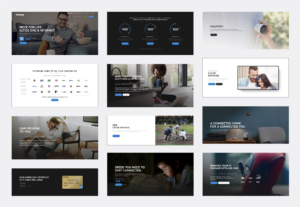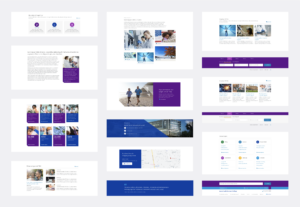Reusability is the ability to use the same resource multiple times in multiple ways and in multiple contexts. And we’re not talking about sustainable repackaging; we’re talking about reusable components in software development.
Developers are creating components based on collections of reusable parts, which is becoming a very popular practice in today’s digital world. We’ll be going over why you should use reusable components and their benefits.
Why do you need reusable components?
It’s understood that almost every application is built using a standard approach. When creating a digital product using a basic standard approach, making it reusable can avoid hours of reinventing the wheel.
With digital products becoming increasingly more complex, reusable components are key to keeping your development time low. The way we approach, and design applications are constantly evolving. The user interface is becoming more interactive and custom to users than ever before.
When creating interfaces, reusable components allow you to break down common design elements such as buttons, form fields, and layout components when designing. As a result, the next time you need to create a UI, you can write less code, resulting in faster development time, fewer bugs, and fewer bytes.
Below are additional benefits of reusable components:
More consistent: With reusable components, there is less of a chance that your designs will not match your brand. Reusable components allow for primary functions to be consistent, allowing greater control and scalability for those building the apps while providing the Disney Bundle, a more consistent experience for the users.
More efficient: With the foundation already in place, more than half the work is done. By using reusable components, you’re saving time, money, and resources by finishing the app faster and at a lower cost. A shared database of components prevents duplication across teams in very large organizations.
Field-proven code: When reusing code, another benefit is that it is pre-tested and proven in the field. The components have been tested and proven to work, so when you incorporate them into your product, you will be less likely to come across issues during development.
Easier testing: Because the code is already proven, testing is also easier. The base functionality of certain features has already been tested. Now, you’re testing to make sure the entirety of it works together and that any new features or sections work well. If you discover problems, you have fewer places to search for the cause because, chances are, the issue is in the newer part you created.
Testing is also simplified because the code has already been proven. At this point, testing is only ensuring that everything works together and that any new features/ sections work properly. If you discover problems, there are fewer places to look because the problem is most likely in the newer part created.
Some of our Favorites
Optimum

Northwell Health
Northwell Health is a perfect example of how valuable reusable components really are. With a few clicks of a button, these components can make well over a thousand pages.
In Summary…
All types of businesses should rely on digital solutions like reusable components. There is a need for businesses to adapt to the changing technological landscape and develop long-term digital models. Reducing time and resources leads to reduced costs, which is critical to long-term sustainability. Reusing code is a simple and intelligent way to capitalize on this shift in the software game.

